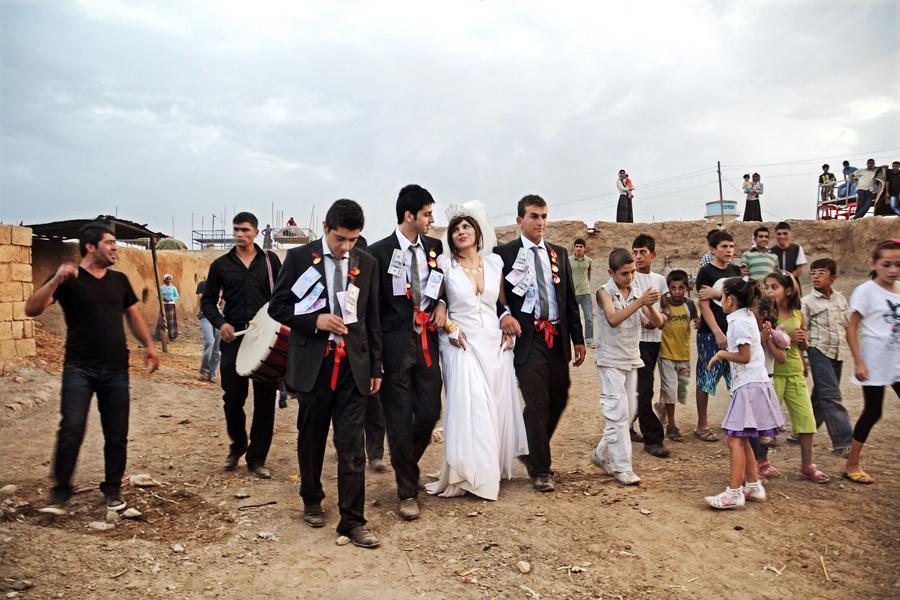
For Şükran Moral, art is a way to express pain, social disruptions, injustice and unfairness. She uses her art as a tool to tell the viewer how women are living and how inequality in society affects everyone. “I always wanted to show the world the inequalities, and when I was a small child, I said to myself that one day I will show what they did to me,” she says.
Moral used to speak to a radio in her childhood house and what was happening in her own childhood world. She dreamt about big things and she valued education more than anything.
Born in a small Black Sea town called Terme, Moral said her father used to tell her that Terme was never enough for her.
“Samsun [province] and even Istanbul was not enough for me. Then, I moved to Rome and realized what he was saying to me. For me the world was never enough,” said Moral in an interview.
That’s why she found comfort in her art. For her creating a work is both a process of thought and critical thinking. Her works are more than just beautiful art creations, each work tells a story of an experience in her life.
Her latest exhibition in Istanbul, titled “Espulsa” and curated by Melike Bayık, was the most extensive show of Moral in Turkey. For art viewers and fans of Moral the show opened a new dimension in understanding the art of the artist. “Espulsa” means unwanted or deported in Italian, said Moral, adding that was why she named the exhibition “Espulsa.”
In Italy, when she received a document with written “Espulsa” on it, she decided to create a performance out of this experience. “They told me that I was going to be deported and the only chance I had was to get married. Then, I came up with an idea of a performance.”
Her 1994 performance “Marriage With Three” is a story of her deportation process. In this performance, Moral got married with three people, one is woman and other two are men. This is her way of opening a new dimension in telling us how marriage is seen in society.
This work was almost a manifestation for women. With this artwork, she asks: “Is it necessary to get married in order to exist properly in society?
“What I wanted to do is to show the whole world how unjustness works in the societies that we live in,” she said.
Rage in her beauty
However, this is not the only work, which is related to the marriage of Moral. In her work titled “Marriage With Three Men,” Moral got married with three men with a village marriage ceremony in Mardin.
“Marriage with Three Men” is full of details. For example, Moral puts a red ribbon around men’s waists. The reason she did that is the meaning of red ribbon in Turkish society.
“Red ribbon, mostly in the eastern marriage ceremonies, are used as a symbol of virginity.”
In this performance, Moral puts the same ribbon on men, as if she wants the viewer to see how women are treated in some societies.
It was not easy for her to survive as an artist, telling the truth, but only the truth about society. That’s why she did not get a proper extensive show before in Turkey.
“I received Artist of the Year award in 2018 from the International Plastic Arts Association in Turkey and then everything changed. Suddenly, everyone became my friend.” However, she also remembers when she did her most famous performance titled “Amemus,” in which she made love with a woman.
“I received death threats, I left the country, and no one stood by me,” she said.
Now, it is different. She feels people understand her better because she continued to criticize the community and inequalities in society, as she should. Still, she thinks it is not easy to exist as a woman, but has more hope compared to the past.
Her power and insistence in showing her power let the viewer discover more of her artworks.
“That’s why, her latest show Espulsa is important,” said Melike Bayık, the curator of the exhibition.
The curator and Moral picked the most important works of Moral between 1994 and 2019. “The main goal was to showcase wide range of works from different disciplines and let the viewer question the reality of inequalities, gender issues and social problems with using Moral’s works,” said Bayık.
But of course, as we experience in life, each painful process or hardship has a beauty to it. Moral, on the other hand, loves to show her beauty and her womanly side in her performances.
Sometimes she sings, just like she does in her video performance “Nightingale,” and lets the viewers discover her lovely voice. Sometimes she enters a hamam, a Turkish bath, with lots of men bathing too.
For her, it is a secret how she manages to enter all the places allocated for men. Somehow, she puts all her rage about women’s issues, societal problems and gender inequality into her works using her beauty and boldness.
She shows the viewer how she creates art is about her restless mind and proves there is a new understanding for each woman living with a restless mind.